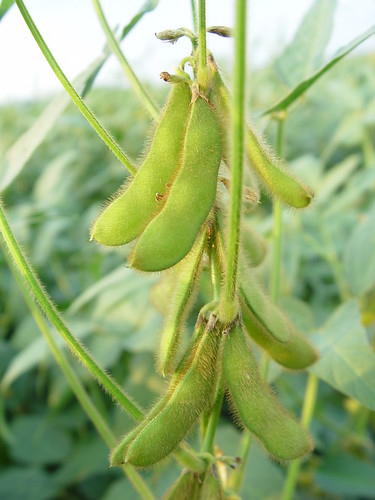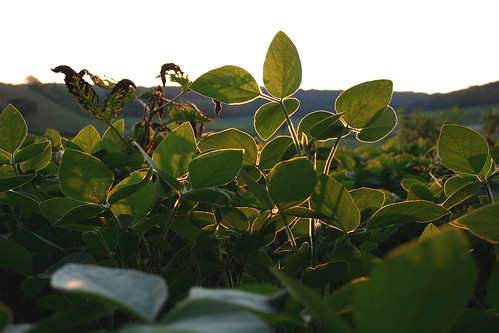Adaptations
To adapt, or not to adapt...
After looking at the characteristics page and reading about the original soybean, you can see that the soybean plant has adapted well over its few thousand years of existence. Its stems have grown stronger and taller, its leaves have gotten larger and more numerous, and its pods and seeds have grown stronger and more durable.
Soybean plants have adapted in response to their habitat (remember, it originated in China, and is now grown all over the world). Each variety of soybean plant adapts itself specifically to a region according to the length of daylight during its growing season.
☼Light is an important source of energy for soybeans. Because of this, their leaves have adapted to an "upright position" to allow light to penetrate into its lower layers. It does this so that it can absorb more light to increase photosynthesis.
These plants also can form resistance to prevalent diseases and insect pests in the region where they grow.
Click here to see how soybeans interact with other organisms...in this context, let's not use the word interact to mean "play with." ☺


